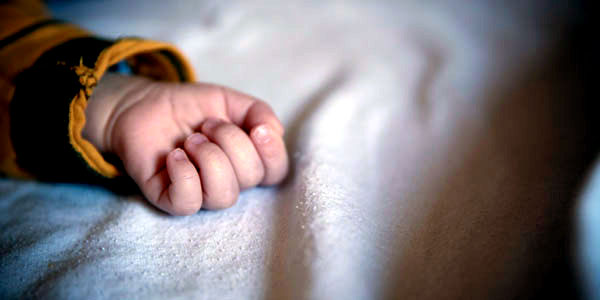
A Case Study of How We Argued a Product Liability Case and Won
Saanvi was about one month away from her 2nd birthday when she was playing quietly on the floor of her parent’s bedroom. Her father was busy taking care of some office work. He was using a portable made-for-home paper shredder when he turned his back for a second. In that small moment, Saanvi got up and reached for the shredder. There were no safety guards on the machine, no design element to protect against injuries to little fingers, and Saanvi — not even two years old — found herself the victim of a product’s defective and negligent design.
Saanvi’s family was devastated by what happened to her. Plastic surgeons did all they could, but unfortunately the finger tips could not be saved. Her family was of Indian decent, making this incident especially difficult to endure because of how the Indian culture regards women’s hands, particularly in wedding traditions. Mehndi, in Indian tradition, is applied during special Hindu weddings and Hindu festivals like Karva Chauth, Vat Purnima, Diwali, Bhai Dooj and Teej. In Hindu festivals, many women have Henna applied to their hands and feet. It is usually drawn on the palm, back of the hand and on feet, where the design will be clearest due to contrast with the lighter skin on these surfaces, which naturally contain less of the pigment melanin. Fingers and hands are a sign of beauty and the meaning behind the age old ritual symbolizes the idea of “awakening the inner light”. For this, and of course many other reasons, Saanvi and her family were traumatized by what happened.
After dealing with the initial shock of the accident, Saanvi’s family began to have questions. They wondered; Why was this paper shredder — which is readily accessible from any office supply store and specifically marketed to the consumer for ‘home-use’ — so unsafe? Did the manufacturer of the product ever contemplate the foreseeable risk that children would be in the direct vicinity of the shredder? Why did the size of the opening only prevent against injuries to fingers of ‘adult’ size and not children’s? Why were the cutting blades so close to the surface opening? Had any other children been injured by this machine?
Looking for answers, they eventually contacted us for help. They knew that we had experience and expertise in the field of product liability law in addition to having a track record of many successful jury trials. After we heard what happened, we solemnly took on the case and began our investigation and analysis by contacting product safety experts.
I know what many of you must be thinking… Wasn’t it Saanvi’s father’s fault? Shouldn’t he have been paying closer attention to the shredder and his daughter? Had he been more careful couldn’t this tragedy have been avoided?
The truth is that those are all valid questions and those questions became the backbone of the defense attorneys’ arguments. In short, the product manufacturer’s insurance company’s attorneys argued aggressively about the comparative liability of Saanvi’s father.
We argued that it was foreseeable that a child could come into contact with this machine. Especially since it was marketed for home use where it is likely that small inquisitive children would be poking around.
To take it a step further, we included Saanvi’s father in the lawsuit as an additional plaintiff under the theory of NIED (Negligent Infliction of Emotional Distress). We used his proximity to the accident to our advantage and convincingly established that he contemporaneously experienced the trauma suffered by his daughter. It took a Herculean legal feat, but in the end we were able to maintain Saanvi and her father’s causes of action and ultimately resolved the case on the eve of trial for a significant amount of money.
Although it is often true with many of our cases that we cannot return people to exactly how they were before an accident — as Saanvi’s hand will never be the same as it was before — we were able to set her settlement up in a way that when she turns 18 years old, she will have the financial ability to do almost anything she wants.
It was especially gratifying to delve into the Indian culture to understand the important role of a women’s hands. That important cultural sensitivity and knowledge gave us additional means to support our large settlement demand and obtain a fair award for the injured child and distraught father.
We were honored to have worked for this family. They were trusting, open, honest, appreciative and grateful. We have done additional legal work for them for years since this accident happened.
We work hard for our clients and try to think outside of the box and fight to get them the compensation they deserve. Do you think you have a case? Let’s chat.
Disclaimers:
The information in this blog post (“post”) is provided for general informational purposes only, and may not reflect the current law in your jurisdiction. This blog is not intended to, and does not, create an attorney client relationship, an offer of employment or a guarantee of success for clients of The Drexler Law firm. No information or representation contained in this post should be construed as an offer of employment, guarantee of success or the creation of an attorney client relationship with The Drexler Law firm, nor as legal advice from The Drexler Law Firm or the individual author. No reader of this post should act, or refrain from acting, on the basis of any information included in, or accessible through, this post without seeking the appropriate legal or other professional advice on the particular facts and circumstances at issue from a lawyer in the corresponding jurisdiction.
There are time deadlines during which a case must be brought, according to your jurisdiction or state, and failing to abide by the jurisdictional statute of limitation rules can result in your case being time-barred.

 0
0